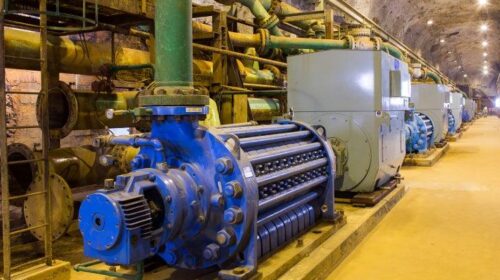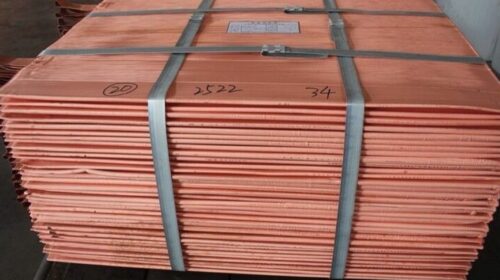Kamoa-Kakula Copper mines 300,000 tonnes of ore in January grading 5.45% copper
Kamoa-Kakula Copper mines 300,000 tonnes of ore in January grading 5.45% copper, including 82,000 tonnes grading 8.80% copper from the high-grade centre of the Kakula MinePre-production ore stockpiles now hold 1.82 million tonnes grading 4.23% copper, containing more than 76,000 tonnes of copperFresh underground mining record achieved with 2,869 metres completed in January; more than 32.7 kilometres now complete – 11.6 kilometres ahead of planOverall progress of Kamoa-Kakula’s first phase, 3.8-Mtpa mining and milling operation now approximately 71% complete; first copper concentrate production remains on track for July 2021
KOLWEZI, DEMOCRATIC REPUBLIC OF CONGO – Ivanhoe Mines (TSX: IVN; OTCQX: IVPAF) Co-Chairs Robert Friedland and Yufeng “Miles” Sun are pleased to announce that underground development at the Kamoa-Kakula Copper Project in the Democratic Republic of Congo (DRC) mined and stockpiled 300,000 tonnes of ore grading 5.45% copper from the Kakula and Kansoko mines in January. The tonnage was 11.5% higher than December, while the copper grade was 1.6% higher.
The 300,000 tonnes mined in January included 231,000 tonnes at an average grade of 6.20% copper, including 82,000 tonnes grading 8.80% copper from the high-grade centre of the Kakula Mine.
The project’s pre-production surface stockpiles now contain approximately 1.82 million tonnes of high-grade and medium-grade ore at an estimated blended grade of 4.23% copper. Contained copper in the stockpiles increased by approximately 16,000 tonnes in January – a 25.9% increase over December’s production reflecting increased mining activity in the ultra-high-grade centre of the Kakula Deposit – to a cumulative total of more than 76,000 tonnes (the current copper price is approximately US$7,940 a tonne).
Kamoa-Kakula is on track to have approximately three million tonnes of high-grade and medium-grade ore stockpiled on surface, holding more than 125,000 tonnes of contained copper, prior to the planned start of processing in July 2021.
“In the mining business, grade is king,” said Mr. Friedland. “And the remarkable grade of the ore coming from Kakula is unprecedented for a major mechanized copper mine of this scale. We are just five months away from scheduled first production, which will mark the next step in the evolution of Ivanhoe Mines into a leading, diversified mining company with a development and exploration portfolio of high-value, critical green metals.”
Mr. Friedland and Mr. Sun also congratulated the project team for establishing yet another new monthly record for underground mine development in January with a total of 2,869 metres of advancement.
“A very strong operational and safety performance by our mining teams in January, and overall a terrific start to 2021,” said Mr. Friedland. “We are immensely proud of the more than 6,000 colleagues on site who are delivering this exceptional project on time and on budget. As we rapidly approach initial production, the project is busy recruiting and training the team that will operate the brand new concentrator plant, creating hundreds of additional permanent, well-paying jobs for local Congolese women and men.”
Underground mine development remains well ahead of schedule, providing the confidence to push forward with Kamoa-Kakula’s Phase 2 construction
January’s record-setting advancement brings total underground development to approximately 32.7 kilometres – around 11.6 kilometres ahead of schedule. The monthly underground development in January was comprised of 2,544 metres at the Kakula Mine and 325 metres at the Kansoko Mine.
Drift-and-fill stoping operations recently commenced at the Kakula Mine, with more than 66% of January’s ore production coming from stoping operations and the remaining coming from mine development activities. Stoping is a highly-productive mining method of extracting underground ore, leaving behind an open space known as a stope.
Mark Farren, Kamoa Copper’s CEO, commented: “The achievement of 300,000 tonnes mined in January is significant as Kamoa-Kakula is fast approaching the mining rate needed to sustain the project’s Phase 1 concentrator plant.”
“It will be important to balance mining volumes and surface stockpiles to meet the requirements of both the Phase 1 and Phase 2 concentrators. We now have nearly two million tonnes of medium- and high-grade ore on surface stockpiles, which should grow to approximately three million tonnes ahead of the scheduled start-up of the concentrator in July, significantly minimizing the ramp-up risk as well as streamlining the commissioning phase,” he continued.
“The large surface ore stockpiles will allow Kamoa-Kakula to maximize throughput once the Phase 1 concentrator is commissioned. Based on our projected mining rates over the next year and a half, we are confident that we also will have more than sufficient stockpiles ahead of the Phase 2 concentrator commissioning,” Mr. Farren added.
Kakula’s combined medium-grade and high-grade ore mined in January was approximately 274,000 tonnes at an average grade of 5.56% copper, including 82,000 tonnes grading 8.80% copper from the +8% copper zone in the centre of the orebody. Mining crews at Kakula are primarily focused on developing the drift-and-fill mining blocks in this high-grade centre. Opening up of the mining footprint for these high grade, drift-and-fill mining areas requires development work in areas of low-, medium- and high-grade ore, and is designed to coincide with the start-up of the processing plant in July. This will allow crews to deliver significant tonnage of high-grade ore directly from Kakula’s underground workings to the processing plant.
Kansoko’s combined medium-grade and high-grade ore mined in January was approximately 26,000 tonnes at an average grade of 4.31% copper. Kansoko’s ore grade increased by 73% in January, compared to December. Kansoko is being developed by training crews and will be a supplemental source of ore for Phase 2 of the project’s development when the Kakula concentrator processing capacity doubles to 7.6 million tonnes per annum (Mtpa) − currently planned to be commissioned in Q3 2022.
Miners drilling a 10-metre-high by 7.5-metre-wide drift near the centre of the Kakula Mine. The average grade of ore mined in this area is 8.80% copper.
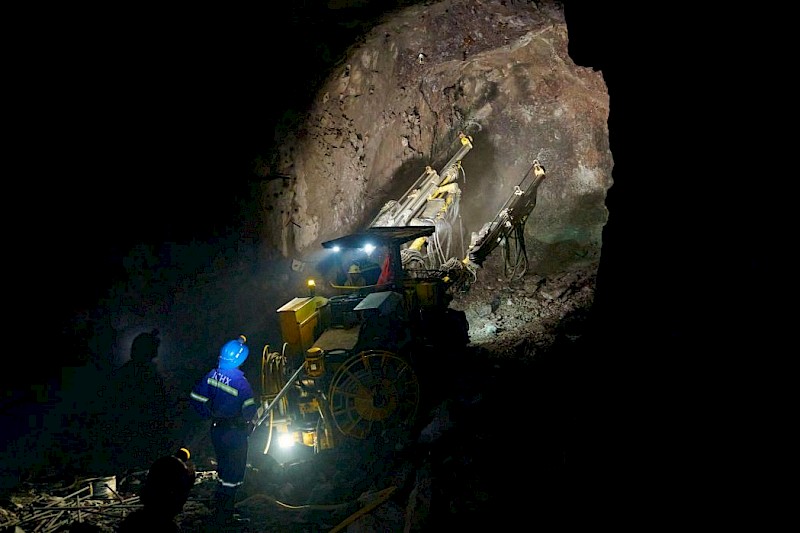
David Nkulu, Safety Officer, conducting a mine safety drill at the Kansoko Mine’s underground refuge centre.
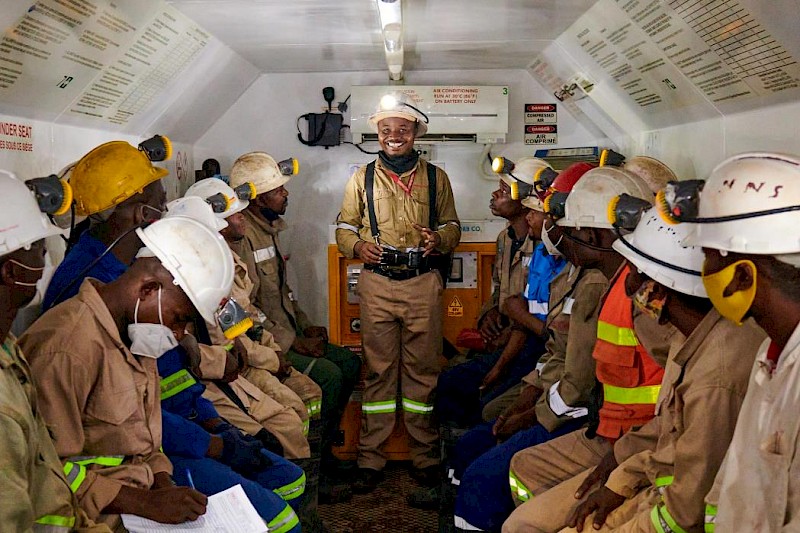
Phase 1 copper production from the Kakula Mine is scheduled to begin in July 2021. Kakula is projected to be the world’s highest-grade major copper mine, with an initial mining rate of 3.8 Mtpa at an estimated average feed grade of more than 6.0% copper at first, ramping up to 7.6 Mtpa in Q3 2020. Phases 1 and 2 combined are forecast to produce approximately 400,000 tonnes of copper per year. Based on independent benchmarking, the project’s phased expansion scenario to 19 Mtpa would position Kamoa-Kakula as the world’s second largest copper mining complex, with peak annual copper production of more than 800,000 tonnes.
A 2020 independent audit of Kamoa-Kakula’s greenhouse gas intensity metrics performed by Hatch Ltd. of Mississauga, Canada, confirmed that the project will be among the world’s lowest greenhouse gas emitters per unit of copper produced.
The Kamoa-Kakula Copper Project is a joint venture between Ivanhoe Mines (39.6%), Zijin Mining Group (39.6%), Crystal River Global Limited (0.8%) and the Government of the Democratic Republic of Congo (20%).
January’s ore production was 11.5% higher than December, with monthly copper grade increasing from 5.36% to 5.45%; pre-production surface ore stockpiles now total approximately 1.82 million tonnes grading 4.23% copper
Chart 1: Cumulative tonnes and grade of pre-production ore stockpiles at the Kakula and Kansoko mines – May 2020 to January 2021.
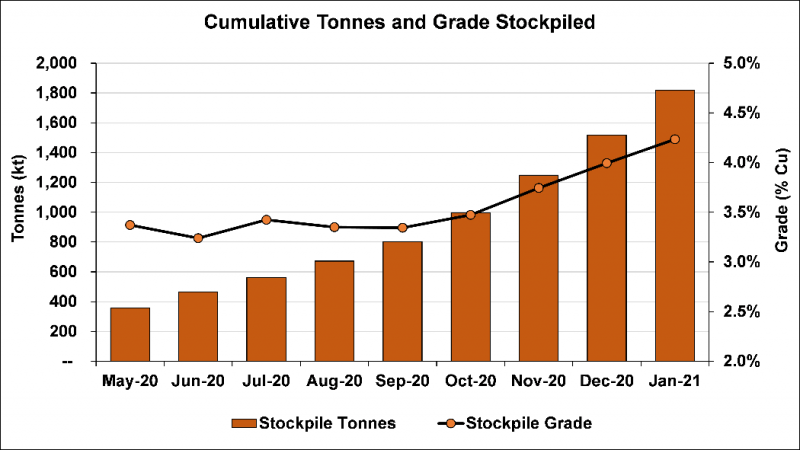
Chart 2: Growth in contained copper in pre-production ore stockpiles at the Kakula and Kansoko mines – May 2020 to January 2021.
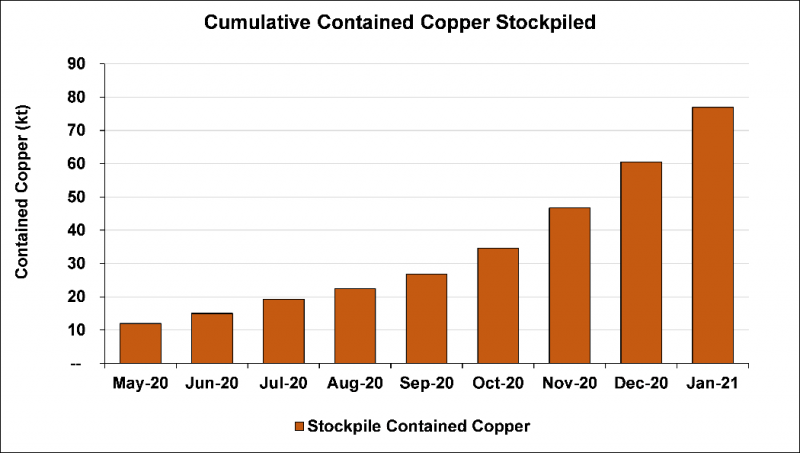
Chart 3: Projected growth in contained copper in the pre-production stockpiles at the Kakula and Kansoko mines up to July 2021. Dotted lines denote projections based on the 2020 pre-feasibility study.
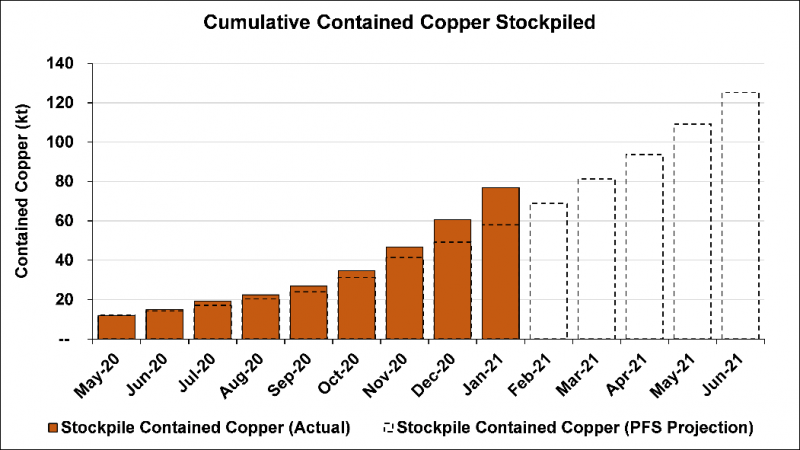
The ore being mined from the northern portion of the Kakula Mine is transported to surface via the conveyor system and placed on a blended surface stockpile that now contains approximately 1.07 million tonnes grading an estimated 4.52% copper.
Additional pre-production ore stockpiles are located at the Kakula southern decline (approximately 243,000 tonnes of high-grade ore grading 5.85% copper and 303,000 tonnes of medium-grade ore grading 2.79% copper) and the Kansoko decline (approximately 12,000 tonnes of high-grade ore grading 6.19% copper and 192,000 tonnes of medium-grade ore grading 2.77% copper).
Kakula’s main pre-production stockpiles at the northern declines. The blended stockpiles currently contain approximately 1.07 million tonnes grading 4.52% copper.
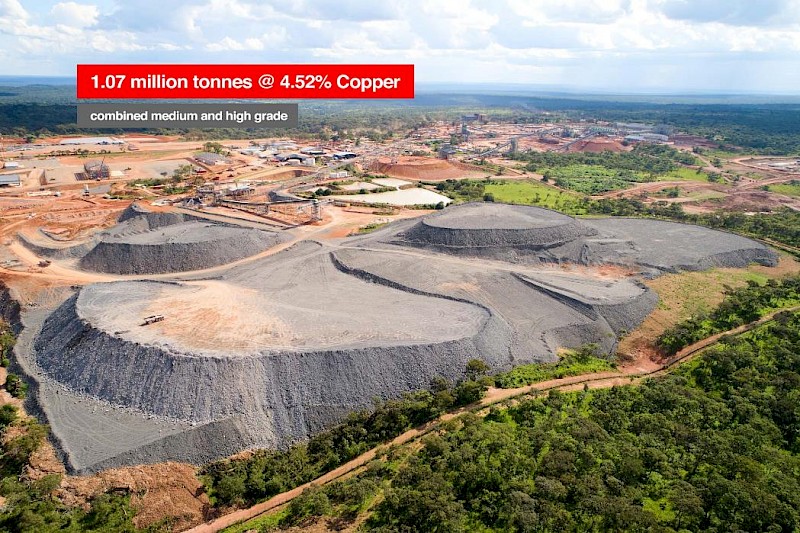
Kakula southern decline ore stockpiles containing approximately 243,000 tonnes of high-grade ore grading 5.85% copper, and 303,000 tonnes of medium-grade ore grading 2.79% copper.
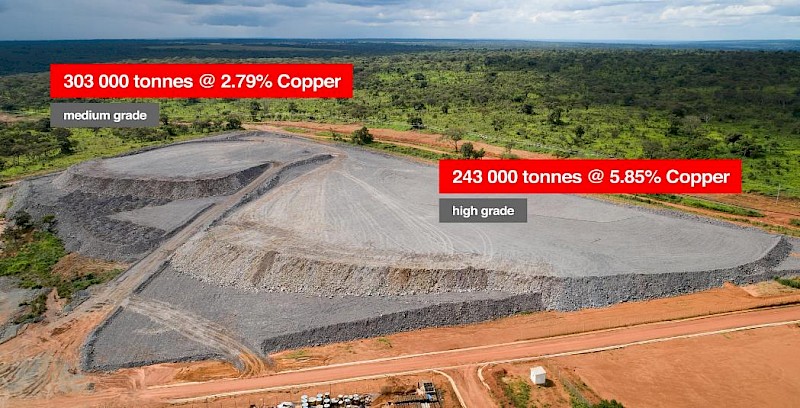
Kansoko decline ore stockpiles containing 204,000 tonnes grading 2.97% copper, including 12,000 tonnes of high-grade ore grading 6.19% copper.
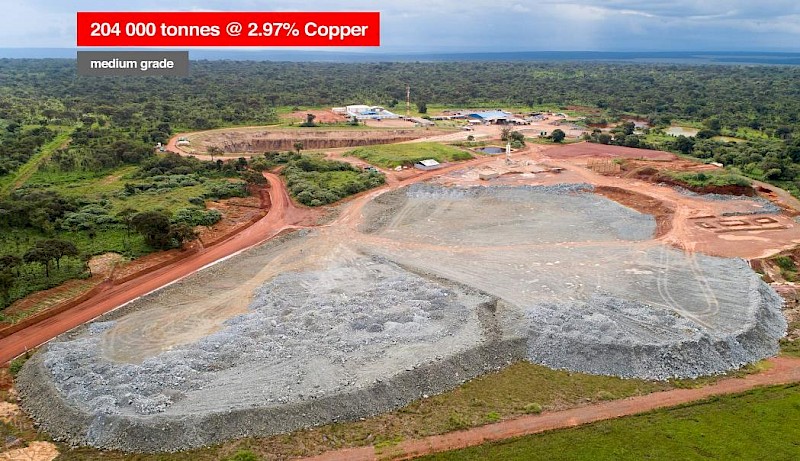
Figure 1: The 13.3-kilometre-long Kakula Deposit overlain on southern Manhattan Island to provide a sense of the scale of the deposit.
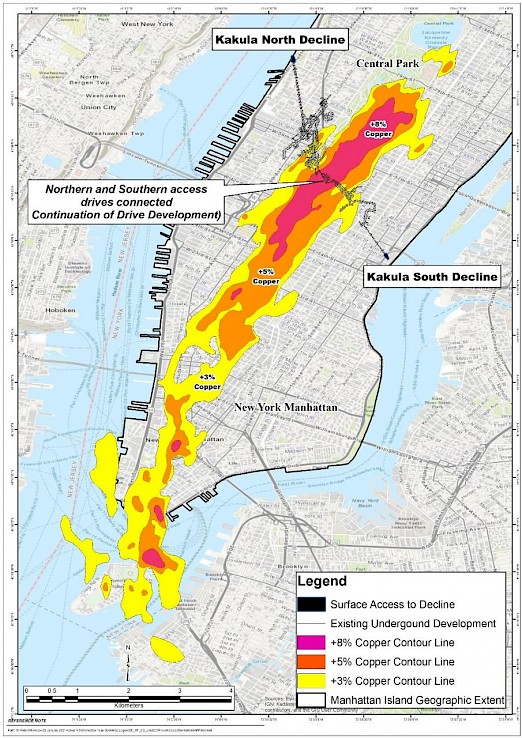
Figure 2: Underground development completed at Kakula Mine to January 31, 2021 (in black).
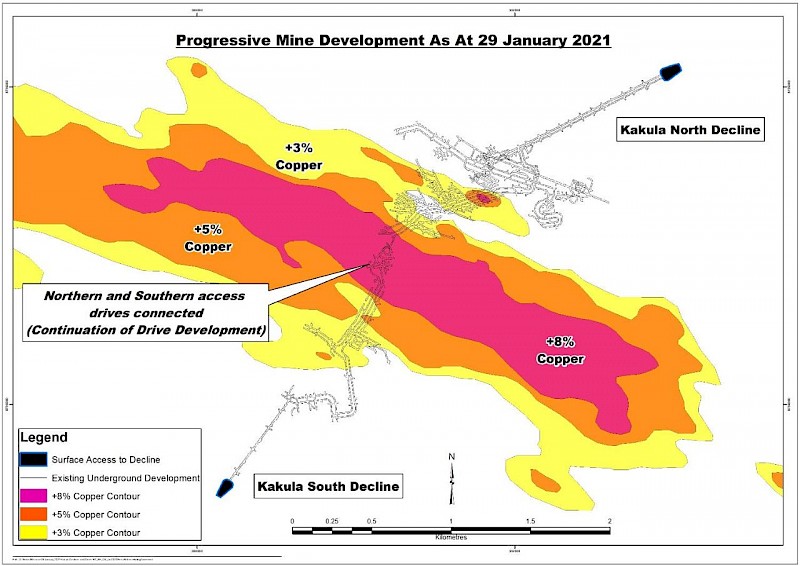
Construction of the initial 3.8-Mtpa concentrator plant and other surface infrastructure on schedule; earthworks and civil works progressing well for the second 3.8-Mtpa concentrator plant
Overall progress of Kamoa-Kakula’s first phase, 3.8-Mtpa mining and milling operation (covering mine infrastructure, concentrator plant and surface infrastructure) now is approximately 71% complete, up from 68% last month. Overall construction of the project’s first phase, 3.8-Mtpa concentrator plant and associated facilities is advancing rapidly and is approximately 43% complete, up from 41% last month. The concentrator plant remains on track to be mechanically complete in Q2 2021, with first copper concentrate production scheduled for July 2021.
Kamoa-Kakula’s first phase, 3.8-Mtpa concentrator plant, with the main 220-kilovolt electrical substation in the background.
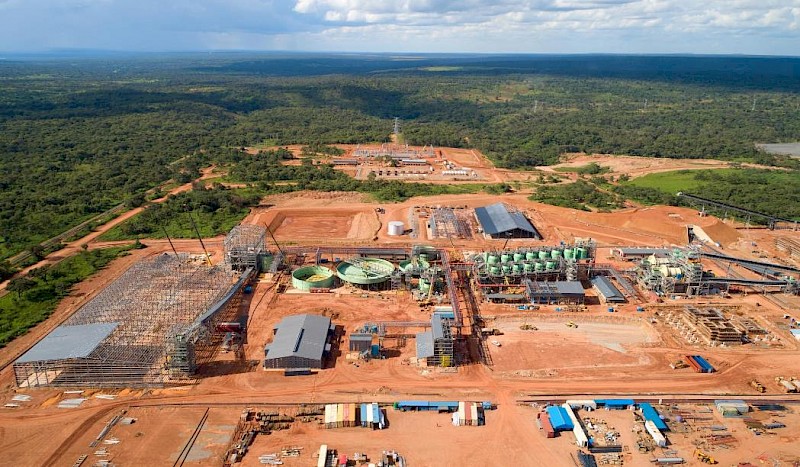
Watch a short fly-over video of the construction of the concentrator plant and other surface infrastructure: https://vimeo.com/506201742/c2965a1fcc
Civil works for the first concentrator plant effectively is complete and the civil contractor now is focusing on the Phase 2 concentrator plant, the high-pressure-grinding-rolls (HPGR) stockpile and milling areas.
Delivery of equipment for the first concentrator plant is nearing completion with more than 2,260 truckloads of equipment – including all structural steel, platework, piping and electrical cable – now on site. The sand filter plant and the last shipments of switchgear are scheduled to arrive in February and March 2021, respectively.
Structural steel erection and platework installation for the first concentrator plant is nearing completion, with only 172 tonnes of structural steel still to be erected (of a total of 4,882 tonnes) and 121 tonnes of platework (of a total of 863 tonnes). Mechanical installation is 68% complete. Piping fabrication and delivery is complete and installation is nearing 50% completion. A total of 83 kilometres of piping will be installed.
All plant areas for the first concentrator have been handed over to the electrical, control and instrumentation (EC&I) contractor for electrical installation. EC&I installation is the last activity before construction completion and subsequent commissioning. Installation of cable racking is complete in most areas and cable installation is well advanced with more than 105,000 metres of copper cable installed out of a total of 207,000 metres (207 kilometres). The installation of instrumentation has started and the energizing of the concentrator plant with medium-voltage power is scheduled for the end of March 2021.
Plumbers Daniel Mbayo (foreground) and Chronos Ilunga (background) installing piping at Kakula’s Phase 1 concentrator plant.
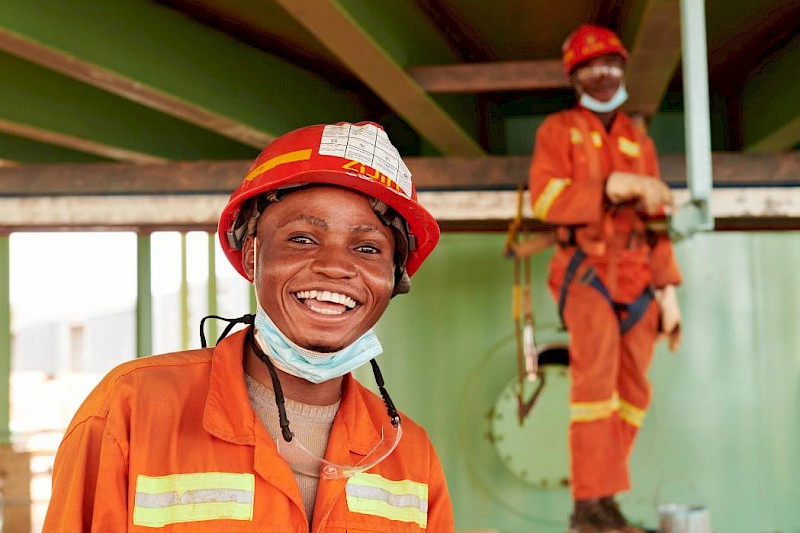
Steel erection and equipment installation for Kakula’s first phase, backfill paste plant effectively is complete with electrical installation well advanced. The backfill plant is scheduled to be complete well before paste backfill is required for mining operations.
The backfill plant will be used to mix tailings from the processing plant with cement to produce paste backfill. The backfill will be pumped back into the mine and used to help support mined-out areas. Approximately one half of the mine’s tailings will be sent back underground, significantly reducing the surface tailings storage.
Construction of the tailings storage facility is progressing well and is scheduled to be completed well ahead of the required date. Installation of the three tailings lines and the tailings-return water line is nearing completion with 24 kilometres (of a total of 25 kilometres) complete.
Construction of the second 3.8-Mtpa concentrator plant is progressing well with the current focus on earthworks and civils. Civils works on the lower base of the ball mills and the HPGR stockpile is underway with a total of 1,720 cubic metres of concrete already poured (of a Phase 2 total of 14,000 cubic metres). Bulk earthworks is approximately 37% complete. With orders for all the long lead items of equipment for the Phase 2 concentrator placed in September 2020, procurement activities have focused on the remainder of the plant equipment. The contract for structural steel supply has been placed.
Work on the concrete foundations for Kakula’s Phase 2 ball mills is making excellent progress, while construction of Kakula’s Phase 1 ball mills (background) is nearing completion.
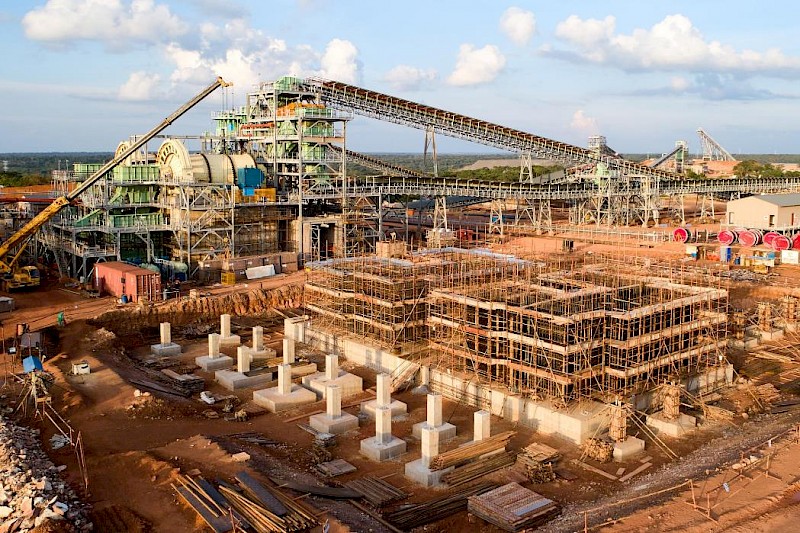
Civil works for the Phase 2 flotation cells foundations (bottom of picture).
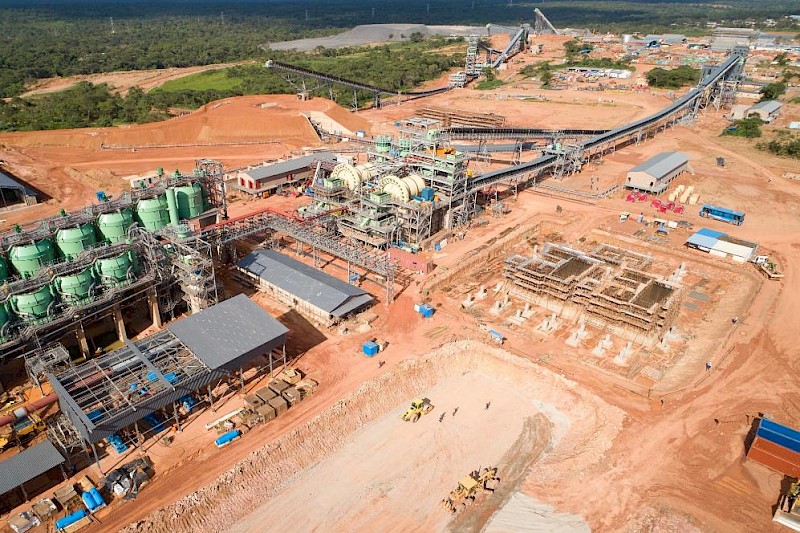
Ongoing construction of Kamoa-Kakula’s tailings storage facility.
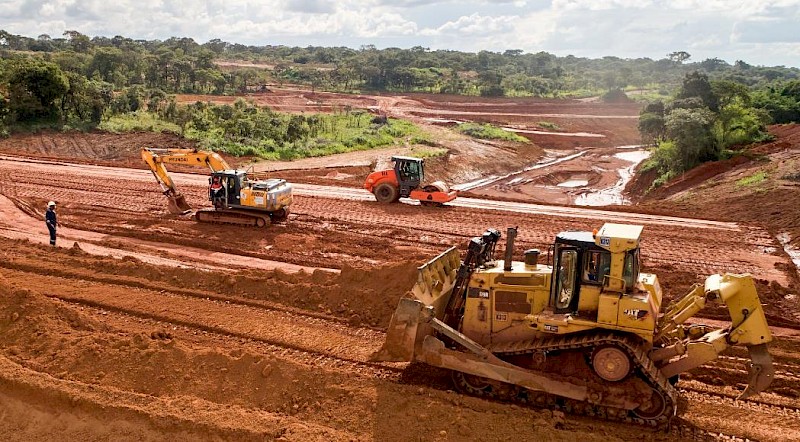
A 3D overhead illustration of the finished Phase 1, 3.8-Mtpa concentrator plant. The picture
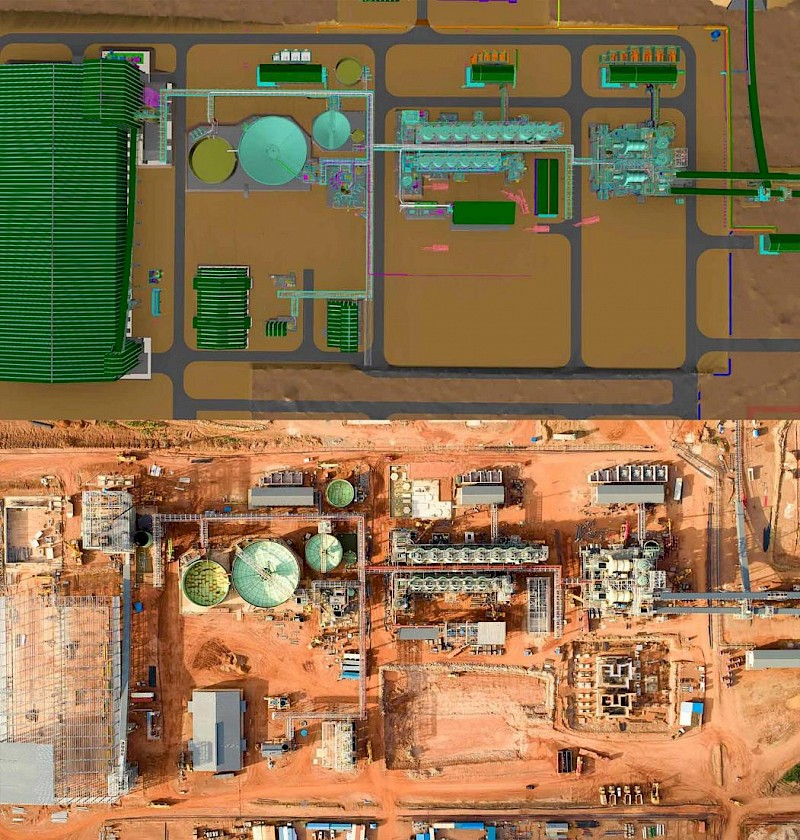
A 3D illustration of Kakula’s initial 3.8-Mtpa concentrator plant, with the recently-initiated Phase 2, 3.8-Mtpa processing plant shown in magenta. The picture below shows the currentconstruction progress.
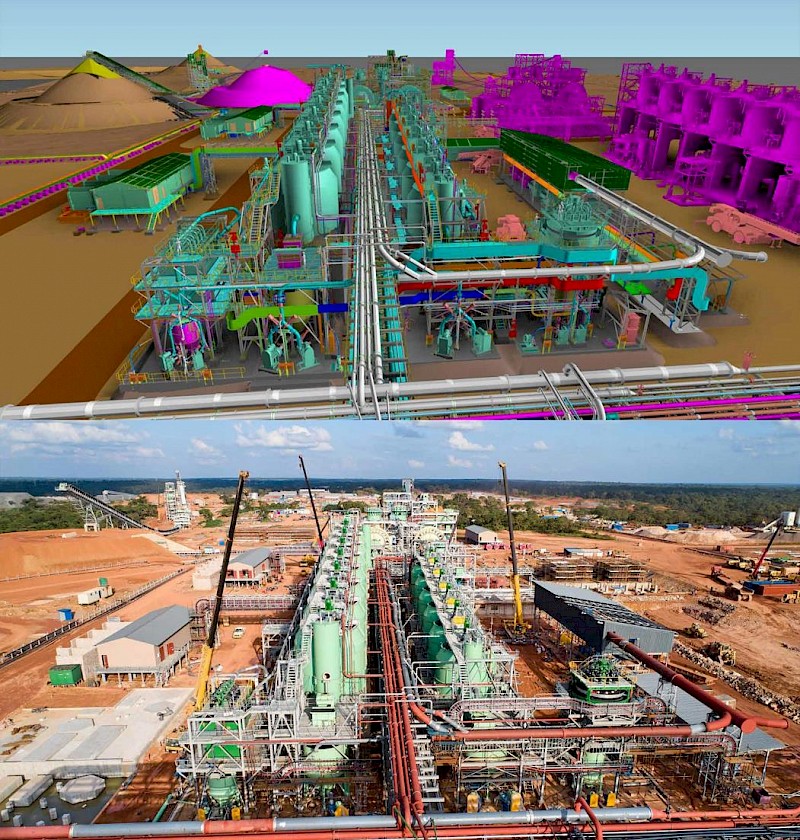
A 3D illustration of Kakula’s first phase, finished backfill plant, with the current construction and the initial 3.8-Mtpa concentrator plant in the background shown immediately below.
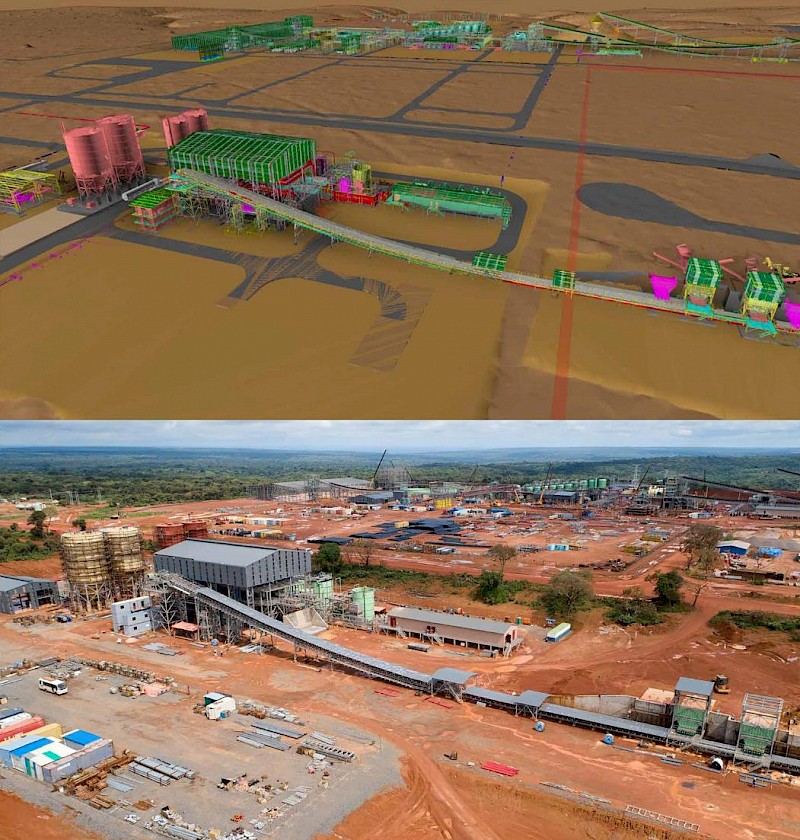
Watch a short fly-over video of construction of the backfill plant: https://vimeo.com/506202840/1f2a57c9df
Watch a time-lapse video of the installation of a disk filter at the backfill plant:https://vimeo.com/506202587/1e4c5c01ff
Advanced, detailed discussions for the marketing of Kakula’s copper concentrates
Kamoa-Kakula is in advanced, detailed discussions with a number of parties with respect to the sale of its copper concentrates. Kakula is expected to produce an extremely high-grade and clean copper concentrate (containing over 55% copper) that will be highly coveted by copper smelters around the world. Metallurgical test work indicates that the Kakula concentrates contain extremely low arsenic levels by world standards – approximately 0.01%.
Kamoa-Kakula now connected to 220-kV national electrical grid; the first of six turbines at the refurbished Mwadingusha hydropower plant now synchronized to the national electrical grid, providing clean, renewable hydropower
In December 2020, the 35-kilometre-long double circuit 220-kilovolt (kV) power line feeding into Kamoa-Kakula was connected to the national electrical grid through theNew Western Dispatch (NRO) substation in Kolwezi. Kamoa-Kakula’s main 220-kV substation is nearing completion and is expected to be energized by the end of March.
Electricians installing electrical cables at Kakula’s main 220-kV substation that will provide power from the national grid to the entire Kamoa-Kakula project.
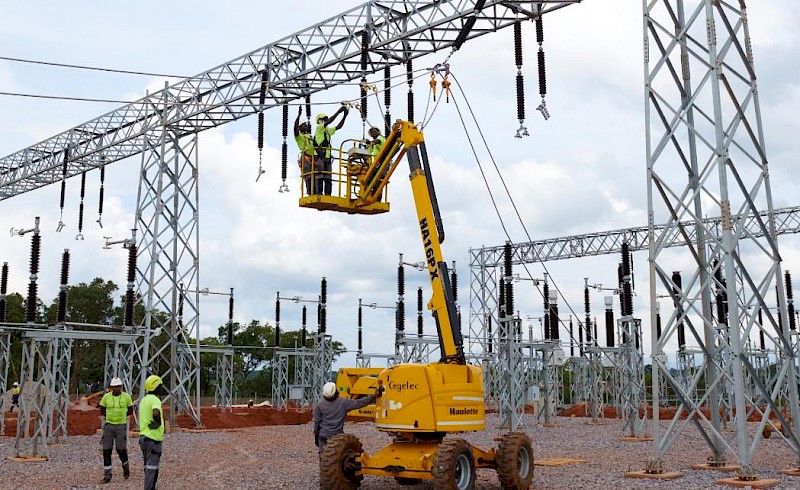
Watch a short fly-over video of the construction the main electrical substation: https://vimeo.com/506203269/c2d24785c2
Ivanhoe Mines Energy DRC also announced that the first of six new turbines at the Mwadingusha hydropower plant was synchronized to the national electrical grid in December 2020. The commissioning of the hydropower plant’s remaining five generating units, in sequence, is in progress. This will ensure that Kamoa-Kakula’s power requirements are met ahead of the commissioning of the concentrator plant.
The fully-refurbished Mwadingusha hydropower plant now is expected to deliver approximately 78 megawatts of power to the national electrical grid.
Ivanhoe Mines Energy DRC achieved a significant milestone in December when the first of six turbines at the Mwadingusha hydropower plant began delivering clean, hydropower to the national electrical grid.
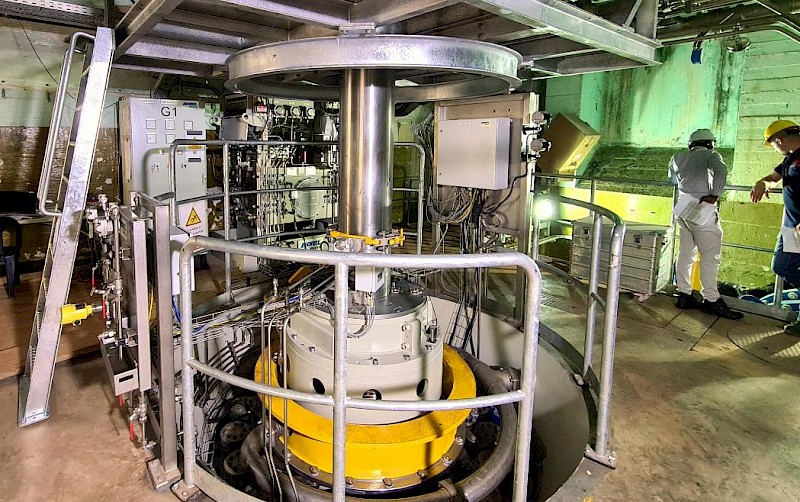
Refurbished and upgraded generating units 1 and 2 at the Mwadingusha hydropower plant. Unit 1 is operational and delivering clean, hydropower to the national electrical grid, while number 2 will begin commissioning shortly.
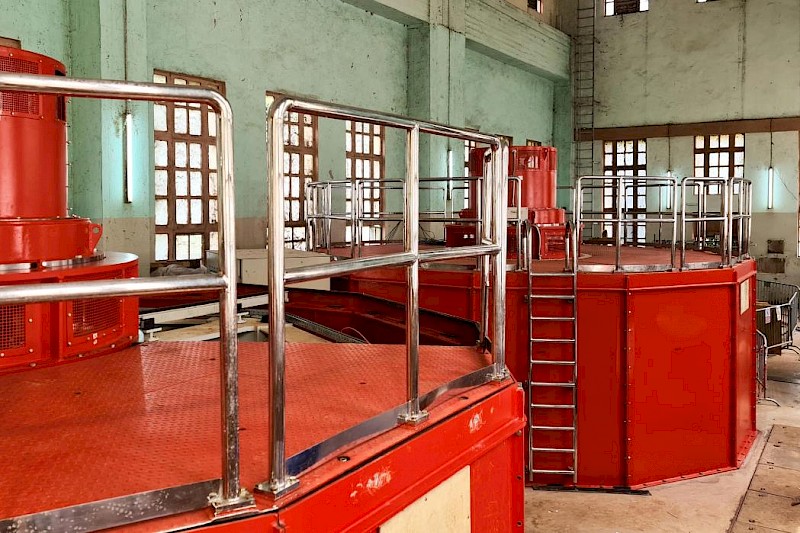
COVID-19 prevention initiatives continue to focus on risk mitigation
Kamoa-Kakula’s prevention measures remain strictly enforced, with further prevention being the focus while the world responds to the latest COVID-19 strains. Rigorous testing, physical distancing, wearing of face masks, frequent hand washing and contact-tracing measures still are in place to protect the safety and health of the workforce and community members.
The project has a well-established COVID-19 isolation facility at the Kamoa Camp. Suspected cases and symptomatic patients are moved to this facility, where they are isolated, tested and treated. Once patients have recovered and are deemed no longer infectious, they can return to work only after an additional quarantine period determined by the project’s medical staff.
Kamoa-Kakula has successfully sourced the latest COVID-19 rapid diagnostic tests (RDT) that test for antigens (the presence of viral particles). The tests are being used by the medical team at Kamoa-Kakula to screen all site arrivals and travellers. Test results are received within an average of 20 minutes, which further enhances the preventative measures already in place.
As the pandemic evolves, the medical team at Kamoa-Kakula continues to review and update its risk mitigation protocols. The project’s preventative measures are at the highest international standards, and should there be a case internally, the risk of spreading or cross-contamination is considered to be very low.
Mark Farren, Kamoa Copper CEO (centre), visiting the Kamoa-Kakula Sustainable Livelihoods sewing project. In addition to sewing Kamoa Copper safety uniforms, face masks also are produced for mine workers and local community members as part of the project’s COVID-19 safety initiatives.
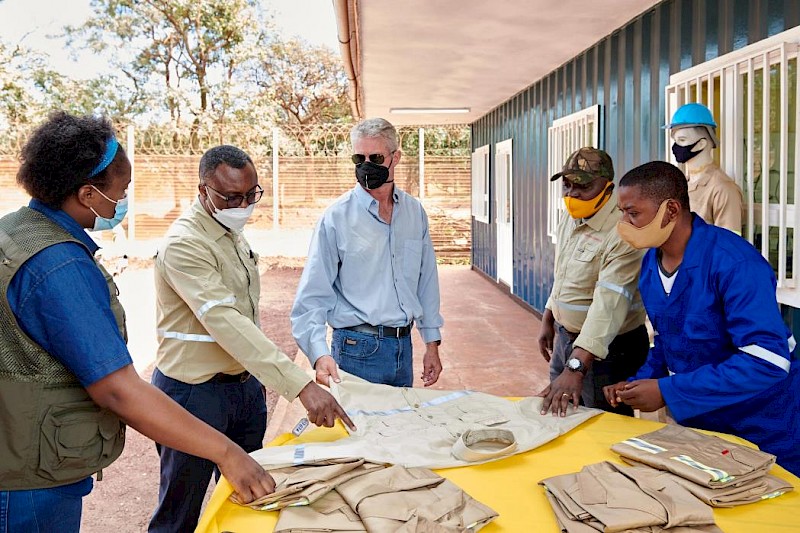
Members of Kamoa’s senior management, sustainability and community development teams visit a local maize farm. Left to right: Christos Ioannou, Senior Enterprise Development; Paul Kabengele, Sustainable Livelihoods Advisor; Mark Farren, Kamoa Copper CEO; Chief Musokantanda Kafweku Sabuni; Dr. Guy Muswil, Head of Sustainability; Brett Watson, HSE Managerial Leader; and Tuhan Steyn, Head of Biodiversity.
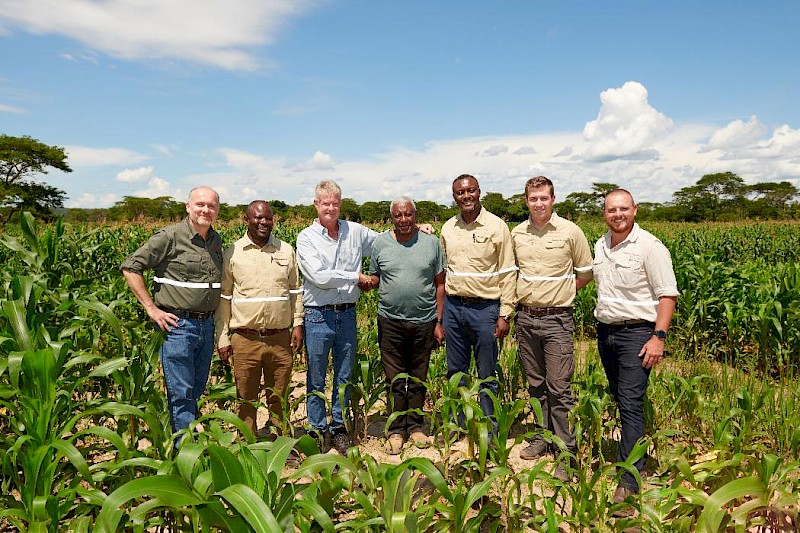
Alain Mukoj (centre) of Kamoa Copper’s sustainability team overseeing a pineapple crop with farmers from the local community of Mupenda.
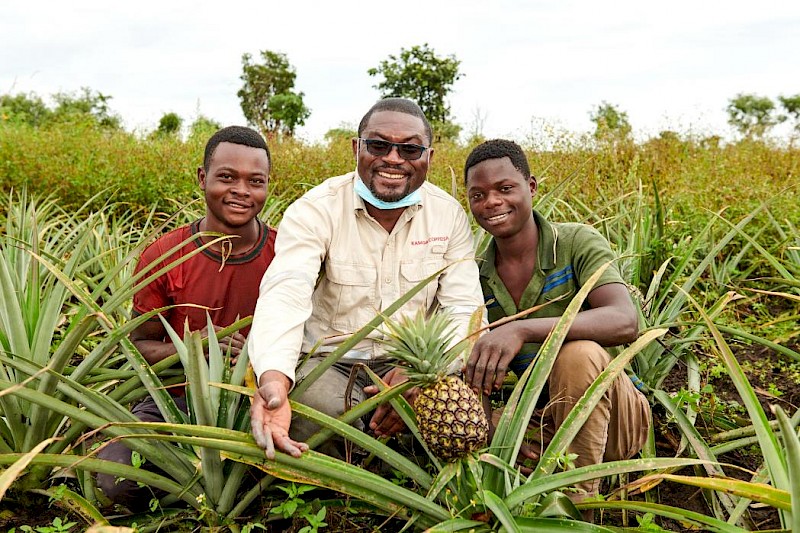
About Ivanhoe Mines
Ivanhoe Mines is a Canadian mining company focused on advancing its three principal joint-venture projects in Southern Africa: the development of major new, mechanized, underground mines at the Kamoa-Kakula copper discoveries in the DRC and at the Platreef palladium-platinum-nickel-copper-rhodium-gold discovery in South Africa; and the extensive redevelopment and upgrading of the historic Kipushi zinc-copper-germanium-silver mine, also in the DRC. Kamoa-Kakula is expected to begin producing copper in July 2021 and, through phased expansions, is positioned to become one of the world’s largest copper producers. Kamoa-Kakula and Kipushi will be powered by clean, renewable hydro-generated electricity and will be among the world’s lowest greenhouse gas emitters per unit of metal produced. Ivanhoe also is exploring for new copper discoveries on its wholly-owned Western Foreland exploration licences in the DRC, near the Kamoa-Kakula Project.
![]()



